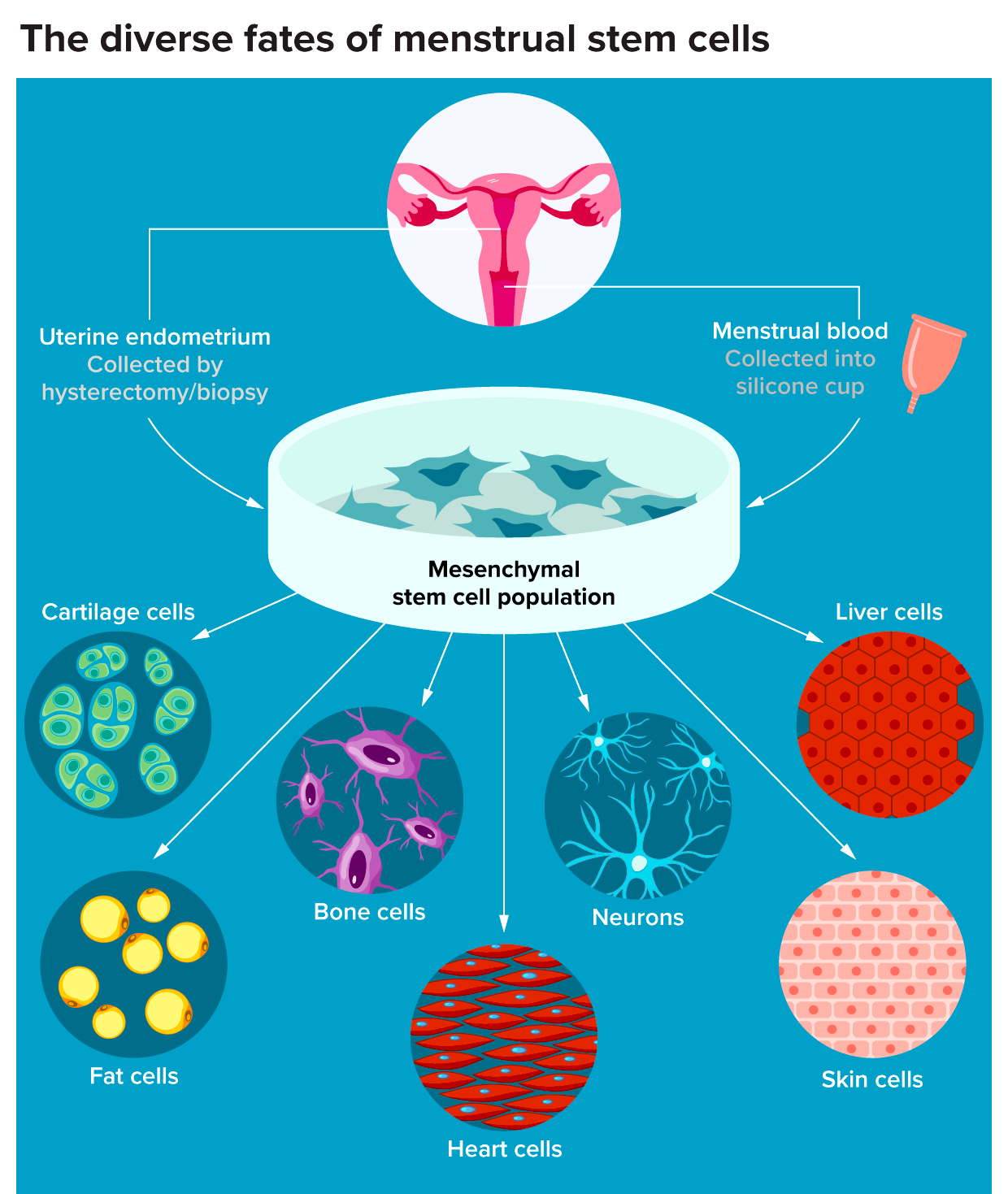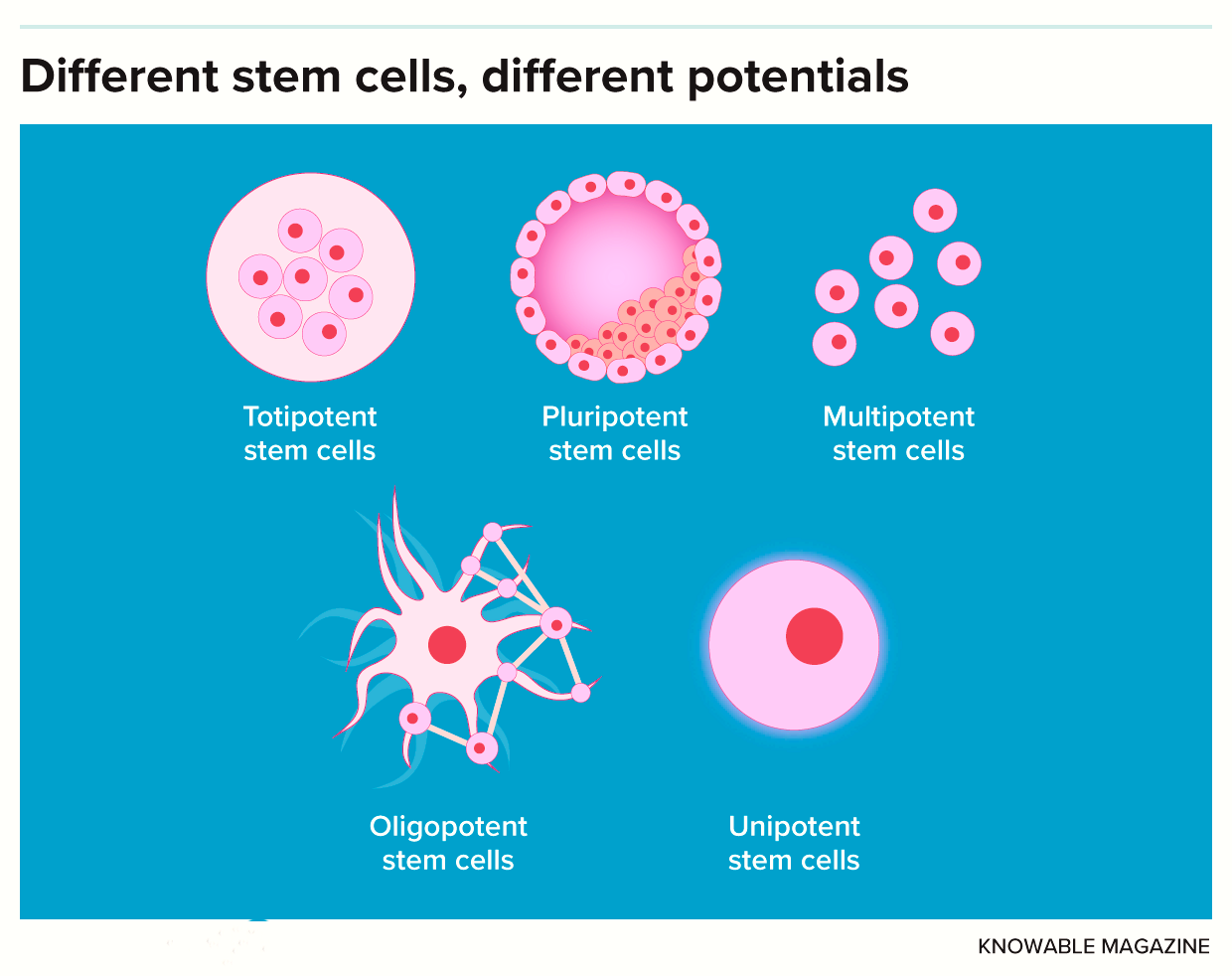Context:
Recently, Biologist Caroline Gargett identified stem cells within hysterectomy tissue that were traced back to the endometrium
Highlights of Key Research:

- Demonstration of Cells Self Renewal & Differentiation Capacity: Through proliferation assays and differentiation studies, they demonstrated their
- Capacity for self-renewal and
- Capability to differentiate into diverse cell types, including fat cells, bone cells, and smooth muscle cells.
- Discovery of Mesenchymal Stem Cells in menstrual blood: Uncovering Menstrual Stem Cells in Menstrual Blood Surprisingly, researchers discovered a subset of endometrial stromal mesenchymal stem cells in menstrual blood.
- Non-Invasive Method of Collection of Stem Cells: This finding provided a non-invasive method for collecting these valuable cells, offering potential applications in regenerative medicine and women’s health.
- Therapeutic Potential by Preclinical studies in animal models have shown promising results in treating beyond gynecological disorders, menstrual stem cells exhibit therapeutic potential for various conditions like treating diabetes, promoting wound healing, and repairing damaged tissue. etc
- Treatment of Endometriosis: Research suggests that differences in gene expression and cellular morphology between stem cells from healthy individuals and those with endometriosis could aid in diagnosis and treatment.
Regenerative medicine:
- It may be defined as the process of replacing or “regenerating” human cells, tissues or organs to restore or establish normal function.
- It refers to a group of biomedical approaches to clinical therapies that may involve the use of stem cells.
Menstruation:
- It is normal vaginal bleeding that occurs as part of a woman’s monthly cycle. Every month, the woman’s body prepares for pregnancy. If no pregnancy occurs, the uterus, or womb, sheds its lining.
- The menstrual blood is partly blood and partly tissue from inside the uterus. It passes out of the body through the vagina.
Endometrium:
- It is the tissue that lines the uterus, or womb—the pear-shaped organ that houses a fetus.
- Its mucous membrane thickens in anticipation of a possible pregnancy. If a fertilized egg is implanted, the lining stays in place. If not, the endometrium thins and sheds as a menstrual period.
Endometriosis: It is a disease in which tissue similar to the lining of the uterus grows outside the uterus. |
About Stem Cells:
- Stem cells are cells from which all other cells, with their respective specialized functions, are generated.
- The human body, under certain conditions, “divides” stem cells to either create new stem cells or cells with specific functions, such as blood cells, brain cells, bone cells, muscle cells, etc.

Types of Stem Cells based on Cell Potency
Cell Potency: The ability of stem cells to differentiate into other cell types is called Cell Potency.
- Totipotent stem cells exhibit highest Differentiation Potential: They can form any cell, and even an entire organism. i.e. Both Embryonic as well as Extraembryonic.
- Pluripotent stem cells show an intermediate level of Potency, while
- Multipotent stem cells — which include the mesenchymal stem cells in menstrual blood — can make a limited range of cell types.
- Oligopotent stem cells can make just a few cell types within the same organ or tissue.
- Unipotent stem cells replace one specific cell type, like sperm or skin cells.
Challenges With Menstrual Stem Cells Potential
- Underexplored and underfunded: Research in this field remains relatively underexplored and underfunded.
- Cultural taboos surrounding menstruation and;
- Gender biases in research funding pose significant challenges.
However, addressing these barriers could unlock the full potential of menstrual stem cells in regenerative medicine and women’s health.
Also Read: Menstrual Hygiene In India
News Source: The Hindu
![]() 14 Feb 2024
14 Feb 2024

